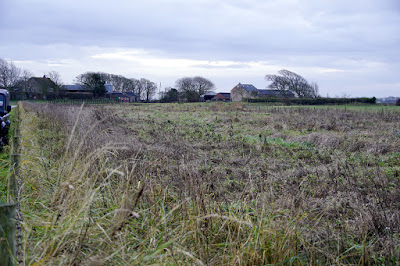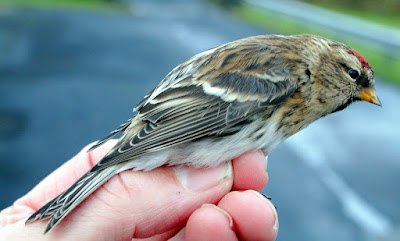There was a heavy frost this morning with the temperature at minus 4C when I cleared the car windows but then struggled to open the frozen solid doors.
At those temperatures I decided to give ringing a miss but stopped at Gulf Lane on the corner of the A588 to empty a bucket of seed and to count the Linnets ready for milder days.
There seemed to be about 70 Linnets, a few Chaffinches and the usual Little Egret in the adjacent ditch.
Linnets
Goodness knows why but I followed the lane around the edge of Cockerham Moss, farmland where crops once grew and where winter stubble and unpicked potatoes provided boundless food for birds like Tree Sparrow, Skylark, Chaffinch, Yellowhammer and Corn Bunting. Nowadays “Moss Edge” is one of the worst examples of farming monoculture I know; a bird free desert where the only crop is silage grass that serves to fatten animals until they’re ready for slaughter.
Cockerham Moss
Cockerham Moss
I re-joined the A588 half a mile from Gulf Lane having seen absolutely zero of note around Moss Edge and then turned right towards Conder and Glasson.
Conder Green seems not to have recovered from its expert makeover of last year and although it is winter there are few birds to be seen. While 90 Teal, 40 Wigeon, 4 Little Grebe and 2 Snipe provided the numbers other waders proved scarce. A Kingfisher provided a literal splash of colour as it dived into the icy water from the sluice wall.
Kingfisher
The dry summer of 2019 gave way to a bumper crop of hawthorn and other berries. In some years berries, mainly hawthorn, get stripped quite quickly by incoming migrant thrushes. This year the countrywide crop is so big that it is lasting longer and may be responsible for the huge flock of Redwings roosting recently at Longridge Fell, 8 miles north of Preston. The latest estimations were of 25,000 Redwings flying to the plantations at dusk.
I found Redwings, Fieldfares and Blackbirds galore along nearby lanes. The overnight frost which blanketed Northern England on Friday night had obviously sent thrushes far and near in search of food. Huge numbers scattered ahead of approaching cars along busy Moss Lane.
Some of the Blackbirds were definitely “continental” types, immigrants from Northern Europe, distinguished by their mottled appearance, streaked throats, dark bills and general behaviour in sticking with their cousins the Fieldfares and the Redwings. I settled in one spot and waited for the birds to come to me.
Blackbird
Blackbird
Blackbird
Hedgerows provide food and shelter for many species. Because they often link small woods, they are essential corridors along which wildlife can travel. It is said that hedges may support up to 80 per cent of UK woodland birds, 50 per cent of mammals and 30 per cent of butterflies.
Redwing
Redwing
The ditches and banks associated with hedgerows provide habitat for frogs, toads, newts and reptiles. It is at this time of year that our protected-by-law hedgerows provide essential food for migrant and wintering species like Fieldfares, Redwings and Blackbirds.
Fieldfare
Fieldfare
Fieldfare
Fieldfare
That was an enjoyable morning. In most years our Redwings and Fieldfares don't stay throughout the winter and have mostly departed for France and Iberia before the year is out. It would be nice if they stayed just a little longer.
Linking this post to Eileen's Saturday.


































































